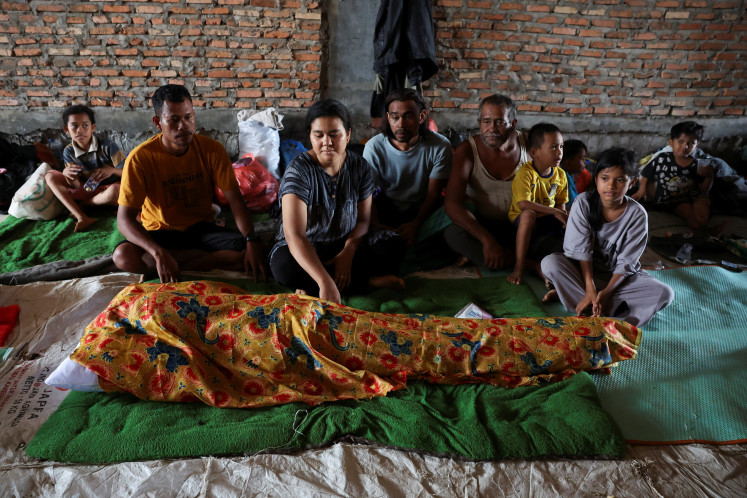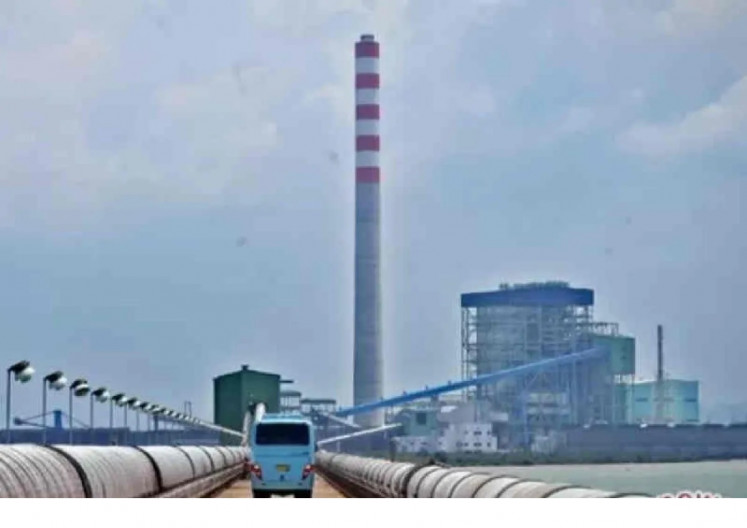Popular Reads
Top Results
Can't find what you're looking for?
View all search resultsPopular Reads
Top Results
Can't find what you're looking for?
View all search resultsPolls: Between Jakarta and Papua
In the remote Papuan regency of Dogiyai, the direct election of a local chief recently led to fresh violence
Change text size
Gift Premium Articles
to Anyone
I
n the remote Papuan regency of Dogiyai, the direct election of a local chief recently led to fresh violence. Rejecting a Constitutional Court ruling on the final outcome of the regency’s direct elections, supporters of a losing regent candidate burned down the offices of the regent and local elections commission. This is not the first we’ve seen of this kind of violence in Papua. So far, the region has given us the worst scenes of violence related to direct local elections in Indonesia.
Previously, a series of violent incidents related to direct polls in the Papuan highland regency of Puncak claimed around 50 lives and wounded hundreds. In early 2012, in another remote highland regency of Tolikara, violence related to direct polls killed 11, injured hundreds and set hundreds of houses and local government buildings on fire. Last year, the Yahukimo’s regent office and the house of a West Papuan governor candidate were burned down after direct poll outcomes were announced. In 2008, angry mobs destroyed the office of Wamena’s local election commission and several other buildings because a regent candidate did not pass the verification process of the local elections commission.
Because of this record of direct poll-related violence, the practice of local democracy in Papua has been assessed as being immature (Kompas, Aug. 29, 2012).
What happened in Papua, however, is in contrast to the current direct polls for Jakarta’s governor. A runoff poll is scheduled on Sept. 20. Jakarta’s elections have been free from such violence. Its voters have been labeled as rational, independent and fluid — required characteristics for a well-functioning democracy. Furthermore, Jakarta’s people have been widely praised for their increasingly mature approach to local democracy.
Although the issues tribal affiliations, religion, race and societal groups (popularly termed using the acronym of SARA) have been deliberately used in Jakarta’s elections to polarize voters, this strategy seems to fail. Jakarta’s rational voters are unlikely to respond to such appeals. The SARA related campaign has also been closely scrutinized by the media, civil society organizations and the election oversight body.
In contrast, in Papua, most of the violence related to direct polls has been shaped by tribal issues. As in other cases of ethno-communal violence, ethnic cleavages have been effectively used as means for mobilization.
How would one explain the stark difference between Jakarta and Papua with regards to their contrasting records in exercising local democracy?
The difference could possibly be rooted in the contrasting level of socio-economic development of the two regions.
On the one hand, Jakarta is the most prosperous part of Indonesia, dominated by the highly educated middle class. It has the most vibrant civil society organizations and boasts the close attention of a high quality free press. On the other hand, the Papua region, which consists of two provinces, is the least developed part of the country, with the highest poverty levels. It also has the lowest human development index; a composite measure of health, education and purchasing power.
Indonesia is not only a large, diverse country inhabited by some 240 million people spread across three time zones; it also displays a degree of regional disparities in terms of the socio-economic development of its 500 regencies and municipalities. However, the method of direct polls in practicing local democracy is more a “one-size-fits-all” approach for all of the country’s sub-national entities.
Such an argument resonates with a variant of the modernization theory firstly proposed by Seymour Martin Lipset half a century ago. The hypothesis asserts that development breeds democracy, not the other way around. To quote Lipset, “from Aristotle down to the present, men have argued that only in a wealthy society in which relatively few citizens lived in real poverty could a situation exist in which the mass of the population could intelligently participate in politics and could develop the self-restraint necessary to avoid succumbing to the appeals of irresponsible demagogues”.
The above cases of Jakarta and Papua may seem like anecdotal evidence. However, my study of 282 regencies and municipalities that held direct polls from 2005 to 2007 provides further evidence of the above modernization hypothesis.
The research constructs an “electoral hostility index” based on a carefully compiled database of the 2005-2007 direct polls in 282 regencies and municipalities. The index measures severity levels of direct poll-related violence. Then, the index is used as a reasonable approach, albeit not perfect, to differentiate the maturity of local democracy across Indonesian localities.
It was found that higher electoral violence was significantly associated with higher poverty rates, lower per capita income and lower human development levels.
This is not encouraging as regards to democratic consolidation. But it provides an important lesson and warning since the severity of direct polls-related violence seems to be much higher in the second round of direct local elections, which began in 2010, compared with the first round during 2005-2008.
Although the chances of direct polls-related violence jeopardizing democratic consolidation at the national level seem very remote, they certainly affect the viability of local democracy. Direct local elections are only alternative procedures in practicing local democracy; not the essence of democracy.
Indonesia’s overall experiences with democracy appear to be consistent with modernization theory. The creation of (or transition to) democracy in 1998 was the country’s second attempt. The first, in the mid-1950s, was a total failure. The country joined the second wave of democratization after World War II, but it was short-lived, lasting from just after independence until “guided democracy” in 1959. Democracy was not restored for four decades. In 1998, a different Indonesia made a second attempt.
Thanks to the socio-economic achievements made during the three decades of the developmental-autocratic Soeharto regime, Indonesia in 1998 was a more modern society — more educated, industrialized and urbanized, and having much higher income — compared with the Indonesia of the 1950. The risks of democracy’s retreat are now much lower than they were four decades ago.
Nevertheless, democracy does not only need to be consolidated viewed from a country level analysis, its viability across the country’s highly diverse localities is also imperative. Otherwise, to borrow a phrase from the researcher Vedi Hadiz, Indonesia will only achieve a consolidated illiberal democracy.
The writer is a lecturer in development studies at the University of Western Sydney, Australia. The above study was published by the Journal of the Asia Pacific Economy (Routledge), in an article entitled “Electoral conflict and the maturity of local democracy: Testing the modernization hypothesis.”










